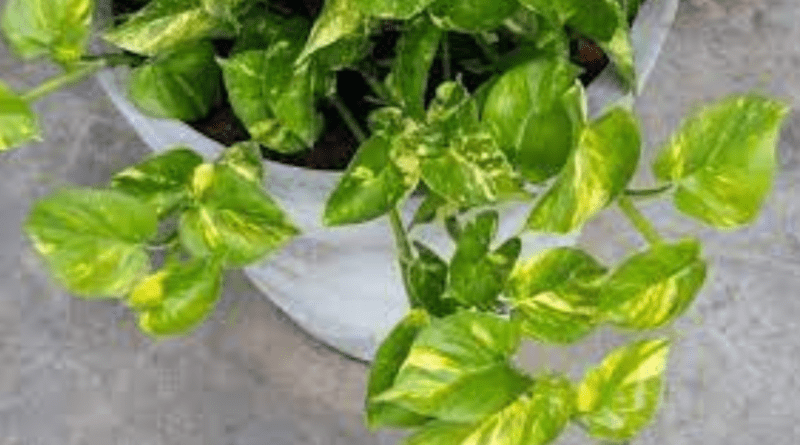Why Is My Money Plant Leggy
Why Is My Money Plant Leggy: Causes, Solutions, and Care Tips
Are you wondering why your once lush, compact money plant has become tall and leggy? Many plant enthusiasts encounter this issue, and it’s essential to understand its reasons and how to rectify it. In this comprehensive guide, we’ll delve into the world of leggy money plants, exploring the causes, solutions, and essential care tips to ensure your money plant thrives.
Understanding Leggy Money Plants
Before we dive into the details, let’s clarify what a leggy money plant looks like. A leggy money plant typically exhibits the following characteristics:
- Long Stems: The stems of your money plant grow excessively long and appear stretched out.
- Sparse Foliage: The leaves are fewer in number and spaced farther apart along the stems.
- Leaning or Falling Over: Due to the weight of the long stems, your money plant may start counting or even fall over.
If you notice these signs in your money plant, it’s time to address them. But first, let’s explore why money plants become leggy.
Causes of Leggy Money Plants
Understanding the causes of leggy growth is the first step towards addressing the problem effectively. Several factors contribute to this issue:
1. Inadequate Sunlight
Sunlight plays a pivotal role in a money plant’s growth. If your money plant doesn’t receive enough sunlight, it will stretch toward the nearest light source, leading to leggy growth. To prevent this, place your money plant in bright, indirect sunlight. If you’re growing it indoors, ensure it’s near a window with filtered sunlight.
2. Overwatering or Underwatering
Watering is another critical factor in money plant care. Overwatering or underwatering can stress the plant, causing it to grow leggy. To avoid this, water your money plant thoroughly, but allow the soil to dry slightly between watering. Ensure proper drainage in the pot to prevent waterlogged soil.
3. Lack of Pruning
Pruning is essential to maintain your money plant’s compact and bushy appearance. Without regular pruning, the plant’s energy is directed toward vertical growth, resulting in leggedness. Prune your money plant by pinching off the growing tips and trimming long stems.
4. Small Pot Size
Growing your money plant in a small pot restricts its root development, which can lead to leggy growth. Consider repotting your money plant into a slightly larger pool for healthier root growth and overall plant development.
5. Nutrient Deficiency
A lack of essential nutrients, particularly nitrogen, can contribute to leggy growth. Ensure you’re using a balanced liquid fertilizer and follow the recommended feeding schedule to give your money plant the nutrients it needs.
6. Temperature Fluctuations
Extreme temperature fluctuations and icy drafts can stress your money plant and cause it to grow leggy. Keep your plant in a stable environment with consistent temperatures to promote healthy growth.
Solutions for Leggy Money Plants
Now that we’ve identified the causes let’s explore the solutions to help your money plant regain its compact and lush appearance.
1. Adjust Sunlight Exposure
Move your money plant to a location with adequate indirect sunlight. Ensure it receives 4-6 hours of filtered sunlight daily. If growing indoors, consider using artificial grow lights to supplement natural light.
2. Maintain Proper Watering
Water your money plant when the top inch of soil feels dry. Always use a well-draining potting mix and pot with drainage holes to prevent waterlogging.
3. Prune Regularly
Pruning is essential to encourage bushy growth. Trim the long stems and pinch off the growing tips to redirect the plant’s energy towards producing more foliage.
4. Repot When Necessary
If your money plant has outgrown its current pot, repot it into a slightly larger container. Ensure the new bank has good drainage and use fresh potting soil.
5. Fertilize Appropriately
Feed your money plant with a balanced liquid fertilizer during the growing season (spring and summer). Follow the manufacturer’s instructions for application.
6. Maintain Stable Temperatures
Protect your money plant from extreme temperature fluctuations and cold drafts. Please keep it in a room with consistent temperatures between 65°F to 80°F (18°C to 27°C).
7. Support Leggy Stems
If your money plant’s stems are already quite long, use stakes or trellises to provide support and prevent them from falling over.
8. Propagate Healthy Cuttings
Consider propagating your money plant from healthy cuttings. This rejuvenates your existing plant and gives you new, compact plants.
FAQs About Leggy Money Plants
1. Can I trim leggy money plant stems without harming the plant?
Yes, you can trim leggy stems to encourage bushier growth. Use clean, sharp scissors or pruning shears to cut the stems just above a leaf node.
2. How often should I fertilize my money plant to prevent leggedness?
Fertilize your money plant every 4-6 weeks during the growing season (spring and summer) with a balanced liquid fertilizer. Reduce or stop fertilizing in the dormant season (fall and winter).
3. Can leggy money plants be saved, or should I start over with a new plant?
Leggy money plants can be saved by following the recommended care tips, including pruning, adjusting sunlight, and watering. Your plant can regain its health and bushy appearance with patience and proper care.
4. Should I use a specific soil type for my money plant to prevent leggedness?
A well-draining potting mix that retains some moisture is ideal for money plants. Adding perlite or sand to the mix can improve drainage.
5. Is it necessary to stake leggy money plant stems?
Staking is beneficial for leggy money plant stems to provide support and prevent them from bending or breaking under their weight.
6. Can I propagate my leggy money plant to create new plants?
Yes, you can propagate a leggy money plant by rooting healthy cuttings in water or soil. This can help you rejuvenate the original plant and grow new ones.
7. What are the signs of overwatering in a money plant?
Signs of overwatering include wilting, yellowing leaves, and soggy soil. Ensure the pot has proper drainage to prevent overwatering.
8. Can I place my money plant outside to get more sunlight?
Money plants can thrive outdoors in filtered sunlight but avoid direct sunlight, as it can scorch their leaves. Gradually acclimate your plant to outdoor conditions to prevent shock.
Conclusion: Your Lush Money Plant Awaits
In conclusion, a leggy money plant is not a lost cause. By understanding the causes and implementing the solutions discussed in this guide, you can revive your beloved plant and enjoy its lush, vibrant foliage again. Remember to provide adequate sunlight, maintain proper watering, and give your money plant the care it deserves. Your money plant will thrive with patience and dedication, bringing green beauty to your home.




